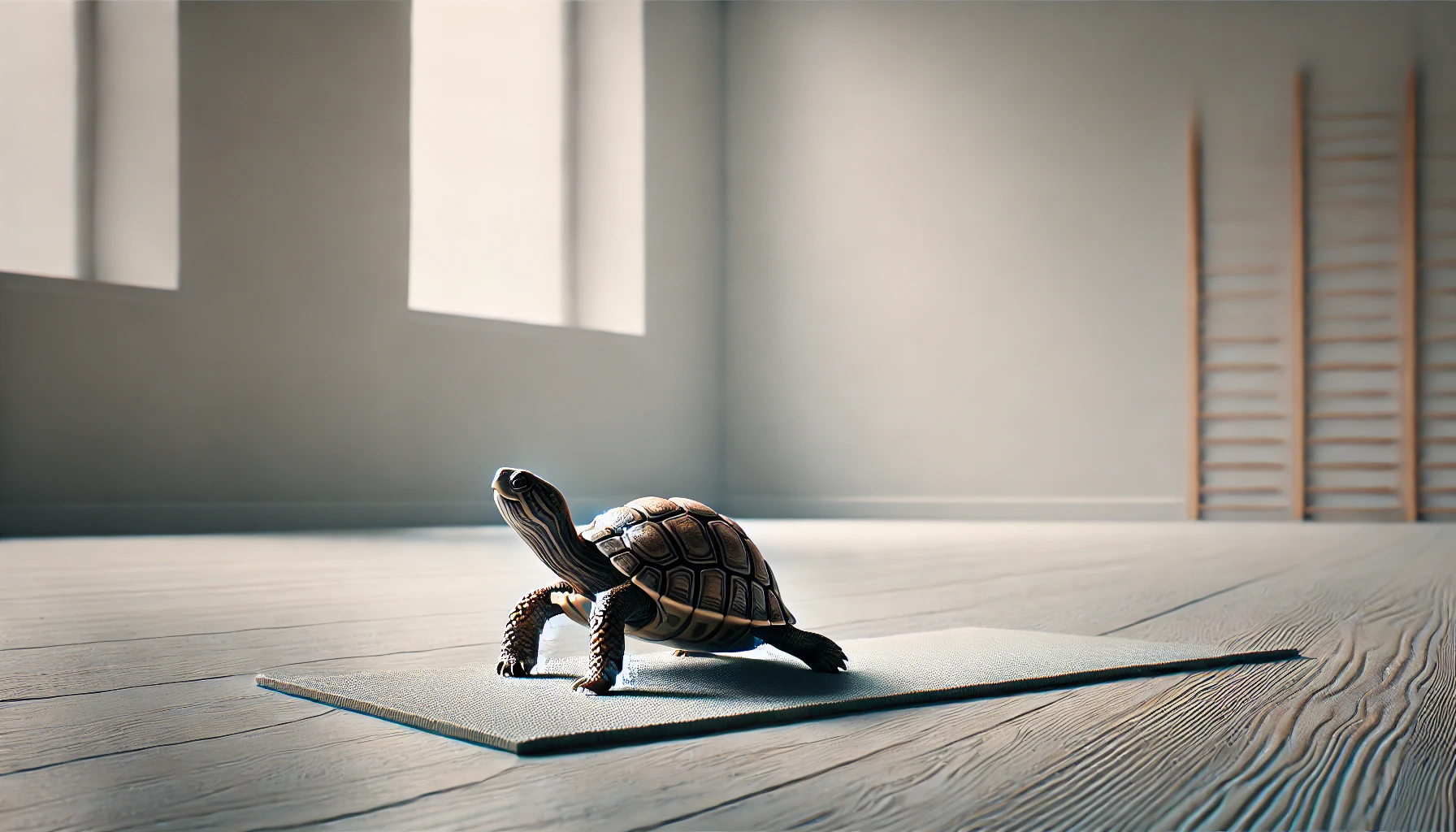
Turtle Yoga & Pranayama
1 year ago By Yogi AnoopTurtle Yoga & Pranayama
Generally, the secret of a turtle’s long life is attributed to its slow-paced breathing. Its respiratory rate is extremely slow, believed to be around 3-4 minutes per breath. This is why it’s also thought to be calm and patient. Although it’s not possible to fully understand its mental state, it certainly appears tranquil.
If we closely observe its external behavior, we find that its sensory and motor organs (such as eyes, nose, tongue, and limbs) move at an exceptionally slow pace. Its nature embodies a steady calmness, perhaps making the slow movement of its senses natural. This slowness is also reflected in its breathing.
In the science of pranayama, there is often a misconception that slowing down breathing leads to a calm and stable mind. However, in my experience, breathing pace is a result rather than a cause. The state of mind dictates the breathing pattern. Take the example of a person with a weak heart; their breaths naturally slow down, but it doesn’t change their nature. Altering breathing significantly does not bring about a fundamental change in one’s nature. However, if one’s nature changes, breathing patterns shift immediately. For instance, in meditation, there is no effort to change breathing; instead, one experiences an understanding of one’s innate nature, and as a result, breath naturally changes.
Here, the focus should be on the turtle’s nature rather than just its deep breathing. Breathing can bring temporary mental changes, but not lasting ones.
In the childhood story of the turtle and the rabbit, the turtle, with its steady pace, ultimately wins the race. This is attributed to its patience. Let’s imagine a slight twist in this story: if the rabbit were declared the winner for a moment, what would be the result? The rabbit would still be restless. This is because the rabbit’s own race was filled with haste, instability, and impatience to get ahead. Even if it reached the destination before the turtle, it wouldn’t experience peace and stability due to its restless nature. The rabbit was in such a hurry throughout its journey that it could never find calmness.
In contrast, the turtle, who seemingly lost the race, experienced peace and stability at every moment of its journey. When it reaches the destination, it will feel even more calm and stable, in line with its journey’s practice. The turtle can pause its pace if it wishes, but the rabbit cannot because it never practiced control over its pace during the journey. The rabbit’s mind was only focused on running and reaching faster, not on understanding or learning. Every part of its body found neither joy nor comfort during the journey, nor at the destination. The quality of one’s journey shapes the outcome. Rushing to reach does not bring happiness; experiencing stability and serenity during the journey and upon reaching the destination is victory.
Based on this principle and philosophy, I have created Turtle Pranayama, a method emphasizing the control of pace, awareness of stability during the journey of breath, and using breath to bring steadiness to one’s nature. This practice emphasizes experiencing stability within the self through the control of breath’s movement.
Recent Blog
Copyright - by Yogi Anoop Academy
